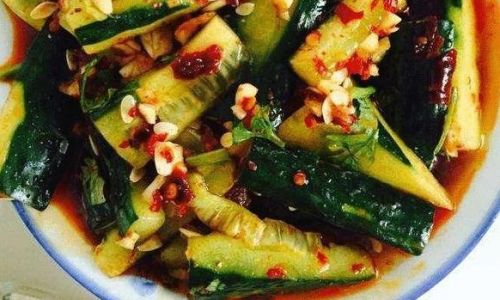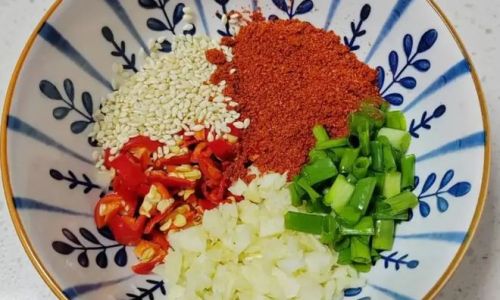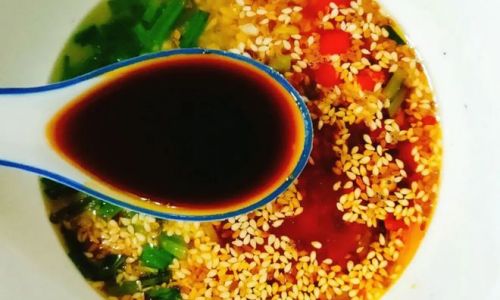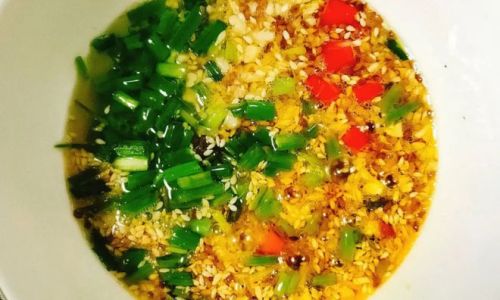Cold dishes, often referred to as “liangban” in Chinese cuisine, are a refreshing staple in warm weather or as light appetizers. The heart of these dishes lies not just in the fresh vegetables or proteins used but in the dressing that ties everything together. A well-balanced dressing can elevate simple ingredients into a harmonious blend of flavors—sweet, sour, salty, spicy, and umami. This article delves into the science and creativity behind crafting the ideal dressing for cold dishes, exploring foundational techniques, regional variations, and troubleshooting tips to ensure your creations dazzle every time.
The Foundation: Understanding Flavor Profiles
A great dressing starts with understanding the interplay of five basic tastes: sweet, sour, salty, bitter, and umami. For cold dishes, the focus leans heavily on the first four, with umami often emerging from ingredients like soy sauce, fermented bean paste, or aged vinegars. The goal is to achieve equilibrium—no single flavor should dominate, but rather complement and enhance the others.
Sweetness
Sweetness acts as a counterbalance to acidity and saltiness. Common sources include sugar (white, brown, or palm), honey, agave syrup, or even fruit purees like mango or pineapple. The key is moderation; too much sugar can cloy, while too little leaves the dressing flat.
Sourness
Acidity provides vibrancy and cuts through richness. Vinegars (rice, black, apple cider, or balsamic), citrus juices (lime, lemon, or yuzu), and fermented liquids like kombucha or kimchi brine are excellent choices. The type of acid influences the dressing’s character—rice vinegar offers mildness, while lime juice adds tropical zest.
Saltiness
Salt is the backbone of flavor, amplifying other tastes. Soy sauce, fish sauce, tamari, or even sea salt can be used. For vegetarian or vegan dressings, miso paste or nutritional yeast can impart savory depth without animal products.

Spiciness and Aromatics
Heat from chili oil, fresh chilis, or Sichuan peppercorns adds complexity, while garlic, ginger, scallions, or cilantro introduce freshness. These ingredients should be minced finely or infused into oils to distribute their flavors evenly.
Core Ingredients and Their Ratios
While recipes vary, a classic Chinese-style dressing often follows a 3:2:1 ratio of vinegar, soy sauce, and sugar, adjusted to taste. Here’s a breakdown of essential components:

- Oil: Acts as an emulsifier and carries flavor. Neutral oils like grapeseed or canola allow other ingredients to shine, while sesame oil adds nutty richness. For a creamy texture, consider blending in tahini, peanut butter, or avocado.
- Vinegar: Choose based on the dish’s profile. Rice vinegar suits delicate greens, while black vinegar pairs well with heartier ingredients like mushrooms or tofu.
- Aromatics: Fresh garlic and ginger should be grated or pounded into a paste to release their essential oils. Dried spices like cumin or star anise can be toasted and ground for smoky notes.
- Sweeteners: Adjust based on the acidity of your vinegar. A tart vinegar like apple cider may require more sugar than mild rice vinegar.
- Enhancers: A splash of Shaoxing wine, oyster sauce, or a pinch of MSG (monosodium glutamate) can amplify umami.
Step-by-Step Mixing Technique
- Emulsify the Base: Whisk oil and vinegar (or citrus) in a 3:1 ratio until thickened. This prevents separation.
- Layer Flavors: Add soy sauce, sweetener, and aromatics, tasting as you go.
- Adjust Consistency: Thin with water or broth if too thick; thicken with a cornstarch slurry for a glaze-like texture.
- Infuse Heat: Drizzle chili oil or sprinkle red pepper flakes at the end to preserve their punch.
Regional Variations and Inspirations
The beauty of cold dish dressings lies in their adaptability. Explore global flavors to keep your repertoire dynamic:
Sichuan-Style (麻辣)

- Ingredients: Chili oil, Sichuan peppercorns, black vinegar, soy sauce, garlic, sugar.
- Profile: Numbing (ma) and spicy (la) with a tangy kick. Perfect for cucumber salads or marinated beef.
Japanese-Inspired (和風)
- Ingredients: Rice vinegar, soy sauce, mirin, sesame oil, grated daikon, and a touch of dashi.
- Profile: Light, clean, and subtly sweet. Ideal for seaweed salads or chilled soba noodles.
Thai-Style (แตงกวา)

- Ingredients: Lime juice, fish sauce, palm sugar, minced garlic, cilantro, and thinly sliced bird’s eye chilis.
- Profile: Bright, salty-sweet, and fiery. Pair with green papaya salad or grilled shrimp.
Mediterranean Twist
- Ingredients: Olive oil, red wine vinegar, lemon zest, oregano, minced shallots, and feta cheese crumbles.
- Profile: Herbaceous and briny. Toss with cherry tomatoes, cucumbers, and olives.
Common Mistakes and How to Fix Them
- Overpowering Acidity: Balance with a pinch of sugar or a splash of oil.
- Blandness: Add a tiny amount of salt or a fermented ingredient like miso.
- Oily Residue: Ensure proper emulsification by whisking vigorously or using a blender.
- Bitter Aftertaste: Avoid overusing garlic or ginger; sauté them lightly in oil before adding.
Advanced Tips for Gourmet Results
- Aging the Dressing: Let flavors meld in the fridge for 1–2 hours before serving.
- Textural Contrast: Incorporate crunchy elements like toasted sesame seeds or crushed peanuts.
- Smoky Notes: Grill or char ingredients (e.g., scallions, chilis) before blending into the dressing.
- Herb Infusions: Steep fresh herbs like basil or mint in hot oil, then strain and chill.
Dietary Adaptations
- Vegan/Vegetarian: Swap fish sauce for soy sauce or coconut aminos. Use agave instead of honey.
- Low-Sodium: Reduce soy sauce and rely on citrus for brightness.
- Nut-Free: Omit peanut butter; use sunflower seed butter or tahini as alternatives.
Pairing Suggestions
- Crisp Vegetables: Cucumber, jicama, or radishes benefit from a tangy vinegar-based dressing.
- Tender Greens: Lightly dress arugula or watercress with lemon and olive oil.
- Proteins: Marinate tofu or chicken in a sesame-soy dressing for added flavor.
Troubleshooting Guide
| Issue | Solution |
|---|---|
| Dressing is too thick | Add 1 tsp of water or citrus juice at a time. |
| Too spicy | Mix in dairy (yogurt) or a starchy ingredient (cornstarch). |
| Separated layers | Re-emulsify with a quick whisk or blender pulse. |
| Overly sweet | Counterbalance with acid (lime juice) or salt. |
Conclusion
Crafting the perfect dressing for cold dishes is an alchemy of intuition and technique. By mastering the balance of sweet, sour, salty, and spicy, and experimenting with global influences, you can transform ordinary ingredients into extraordinary meals. Remember to taste relentlessly, adjust fearlessly, and most importantly, have fun. Whether you’re hosting a summer barbecue or seeking a quick weekday lunch, a well-made dressing is your secret weapon to culinary delight.

Final Tip: Keep a journal of your favorite ratios and flavor combinations. Over time, you’ll develop a repertoire of dressings as unique as your palate. Happy experimenting!






0 comments